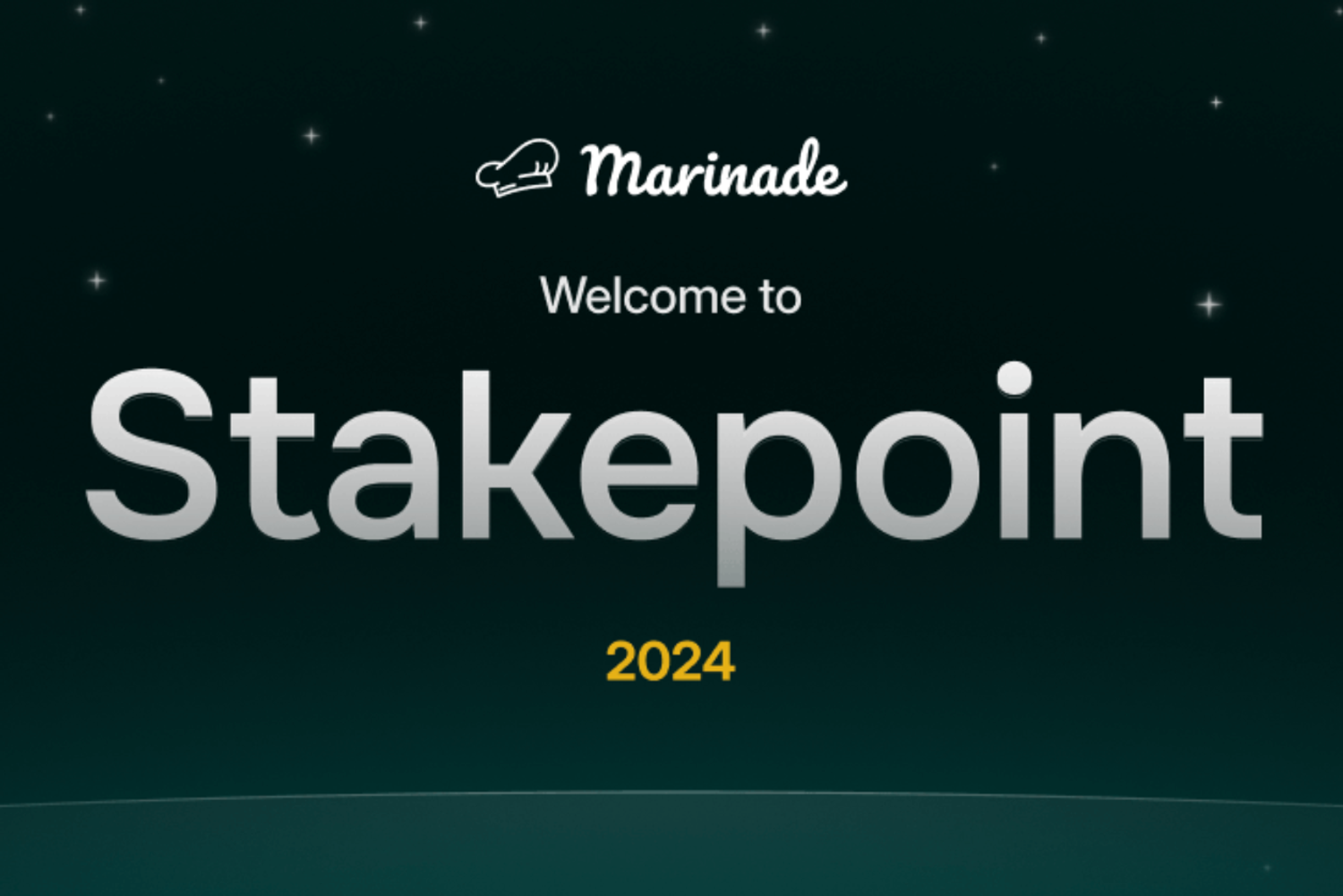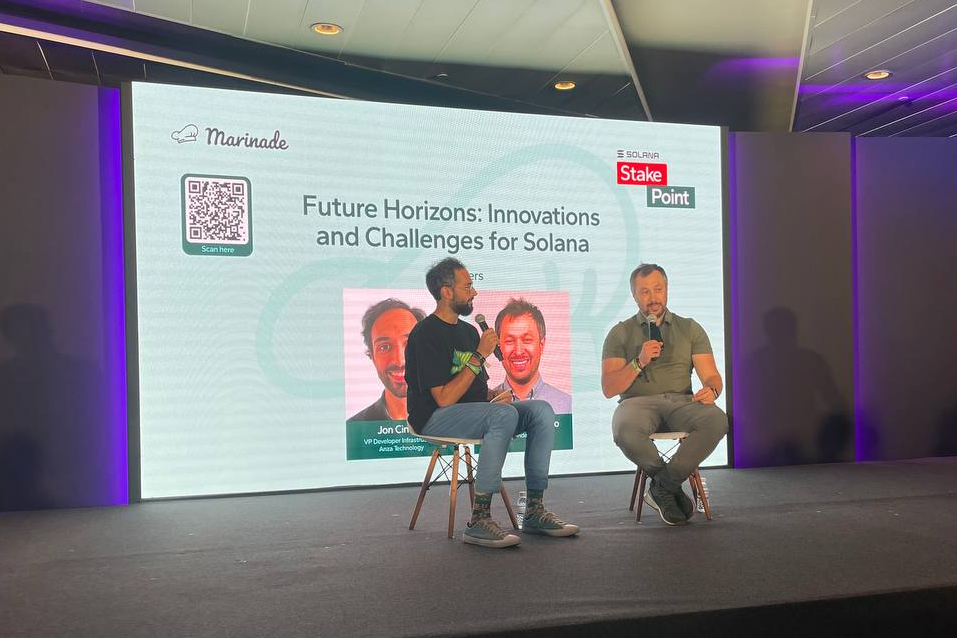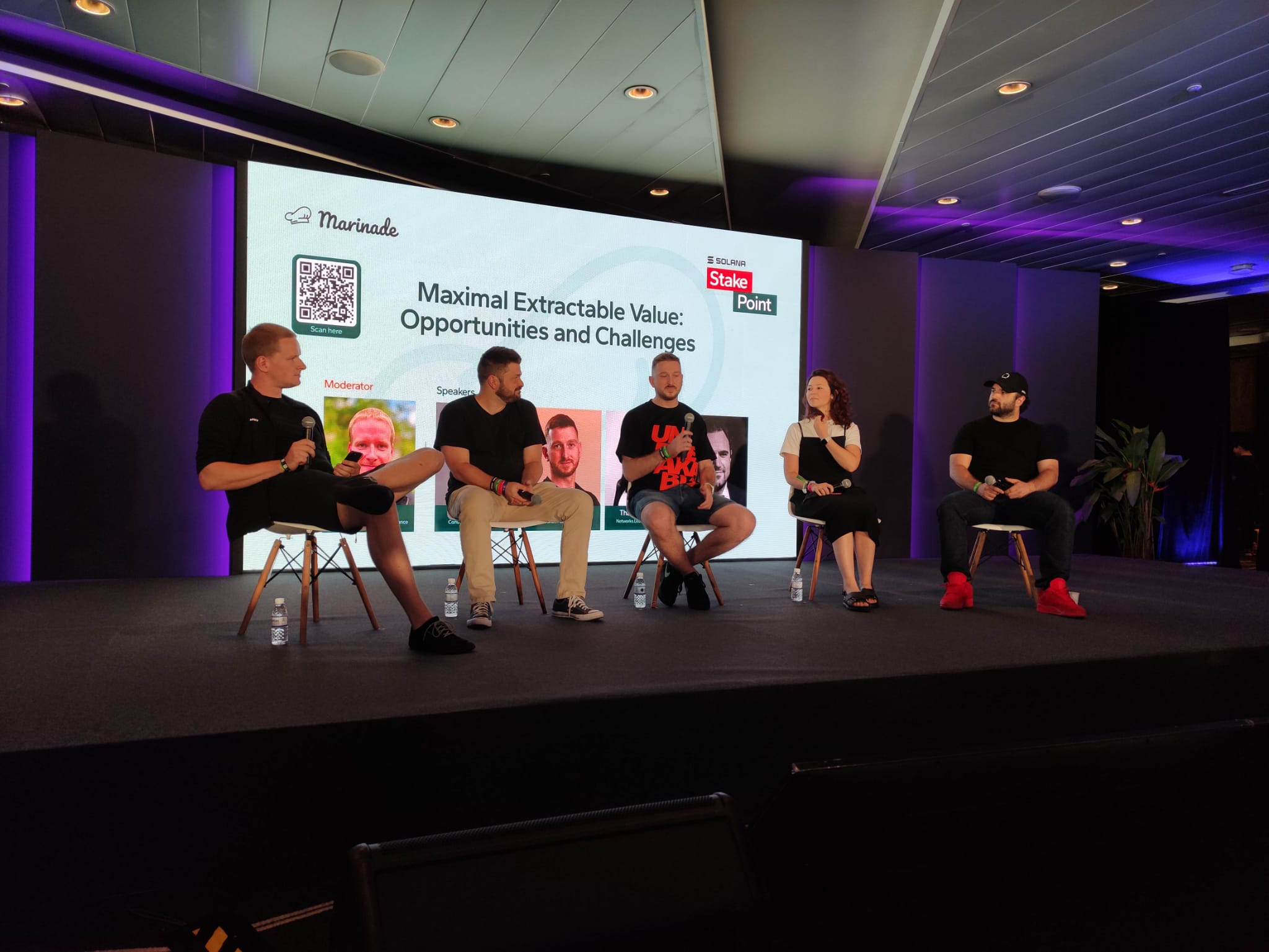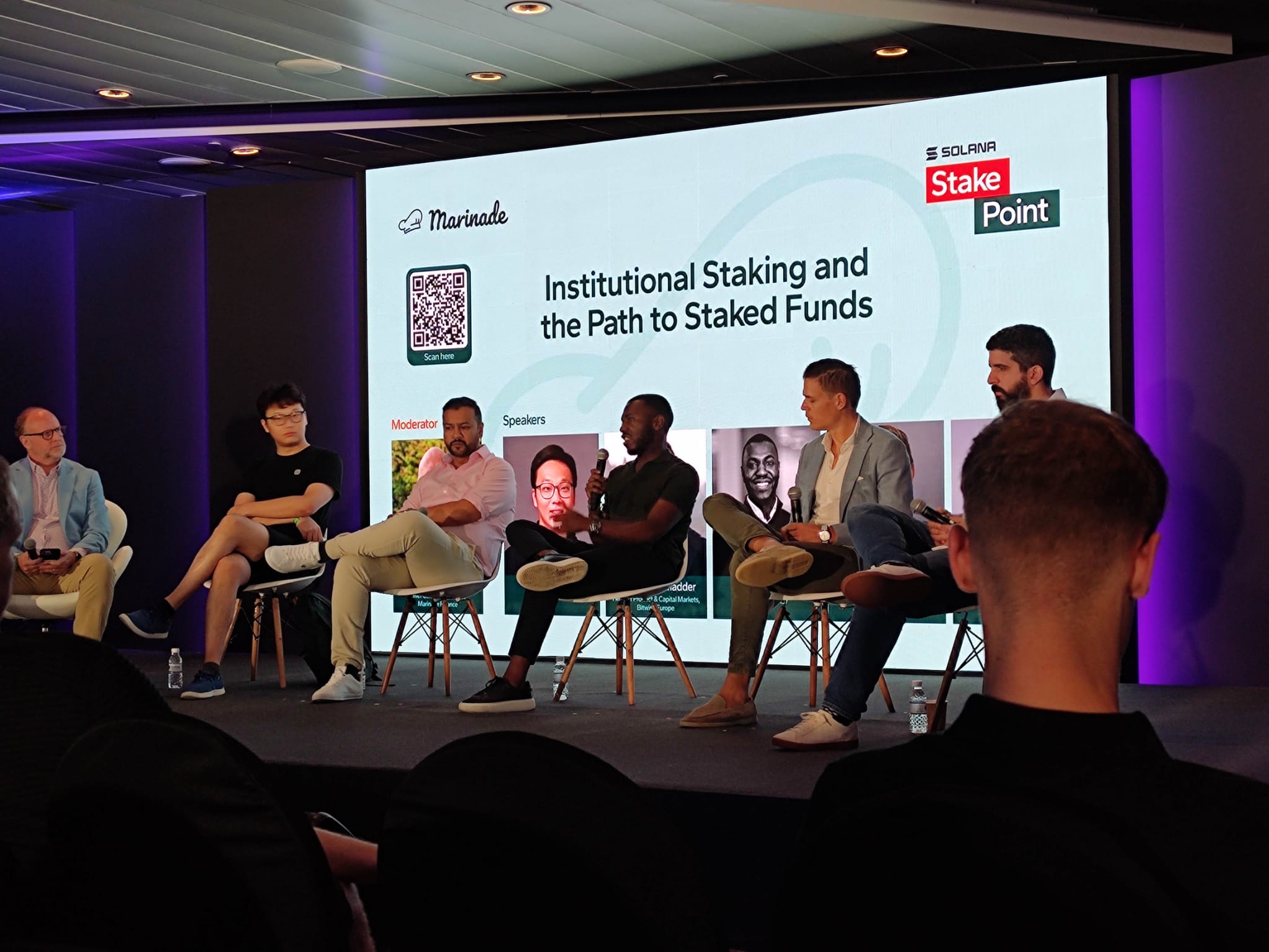
Toly’s Competitive Vision for Solana, The Pros and Cons of MEV, and Institutional Staking - Here’s What You Missed From Marinade Stakepoint
Marinade Finance kickstarted Breakpoint proceedings in Singapore, with experts offering profound insights into Solana’s staking landscape.
- Published:
- Edited:
The curtain-raiser to the main event, Marinade’s Stakepoint provided attendees with a valuable glimpse into Solana’s dynamic staking ecosystem.
Experts from a staggering array of backgrounds, from founders and fund managers to regulators, custodians, and Solana co-founder Anytoly ‘Toly’ Yakovenko, took the stage to illuminate the often misunderstood landscape.
How will Solana compete with TradFi platforms like the NASDAQ and NYSE? Are there benefits to the supposedly shady world of MEV? What does staking at an institutional level look like?
Toly's Vision for Global Solana
Speaking with Anza’s Jonathan Cinque, Anytoly Yakovenko mused on the current state of the Solana network. Toly asserted that while the network had witnessed prolific growth and was set to benefit from the additional security and decentralization provided by multiple validator clients, ‘we’re not there yet’ in terms of preparedness for institutional adoption at scale.
However, that’s not to say that Solana doesn’t provide unique advantages over TradFi systems. Toly remarked that Solana’s global state would give it a competitive edge over centralized systems.

Compared to platforms like the NASDAQ and the NYSE (New York Stock Exchange), financial products on Solana are able to be more reactive to global events. Despite the time constraints associated with sharing information digitally being defined in milliseconds, Toly argues that a globally distributed state leads to faster, more efficient markets.
Against the NASDAQ and the NYSE Solana “competes by being global, by being everywhere”, which in turn allows for “price discovery on a global scale”.
Reflecting on Solana’s existing DeFi landscape, Toly commended the increasing adoption of LSTs. Liquid staking tokens now account for approximately 6.5% of staked SOL. Compared with the technical complexities and “clunky CLI” of native staking, LSTs arguably provide a simpler and more efficient staking distribution system “wrapped up in a token”.
Is MEV All Bad?
For some, MEV (Maximum Extractable Value) is a blight on the network that only benefits shady operators at the expense of honest users. On the other hand, efficient MEV helps maintain consistent market prices across Solana.
It was also noted that MEV is only considered a DeFi-exclusive problem due to blockchain’s inherent transparency. Galaxy Digital Head of DeFi Michael Marcantonio posed an intriguing question: “How much MEV happens on the NYSE? We don’t know, because it’s not public.”

On a particularly fiery panel, experts discussed the existing problems in the MEV landscape, and theorized potential solutions. Chorus One Networks Lead Talitha Franklin expressed enthusiasm for the upcoming launch of Paladin, a MEV protocol that distributes rewards directly to token holders.
While panelists had mixed feelings about Paladin, Jito Foundation contributor Andrew Thurman suggested that “experimenting with ways to combat toxic MEV is good” for the continued growth of the Solana ecosystem.
Institutions Eager to Stake SOL
Staking SOL is vital to the network, not only for security but also as a countermeasure to token inflation. According to RE7 Labs’ Head of BD Jordan Walker, “it’s an inefficient use of capital to not stake.” As one of the oldest and most reputable staking providers in the Solana ecosystem, Marinade is well-equipped to spearhead institutional staking.

However, the crypto space moves quickly and getting the paperwork sorted often falls behind. Bitwise’s Chanchal Samadder conceded that “it takes time for regulation to catch up.” Institutional funds are eager to stake their SOL, but regulatory clarity needs to be firmly established before institutional staking begins in earnest.
While regulators are still catching up the basics, Solana restaking has emerged as a natural evolution. Restaking protocols like Solayer have enjoyed rapid growth in recent months, fostering over $175M in TVL (Total Value Locked). Institutional funds are certainly interested in the restaking landscape, however, Sammander admits that, from a regulatory perspective, “restaking is a bridge too far.”
The Woes of Governance
One of the most thought-provoking panels of the event dove into the relationships and responsibilities of validators and delegators. Panelists agreed that one of the biggest challenges facing the staking landscape was voter apathy.
The majority of delegators simply aren’t interested in keeping up to date with governance proposals. Instead, delegators are often motivated solely by staking rewards, favoring high APY over alignment with validator philosophy and politics.
Other discussion topics included the ethics of a validator making decisions on behalf of their delegators and whether delegators should be enabled to overpower said choice. Tackling delegator involvement and education remains a significant challenge, but requires an honest effort from both parties to truly progress further.
Balancing KYC and Web3’s Inherent Values
Blockchain technology is built on several key principles, including anonymity, privacy, and permissionless. However, this naturally provides complications for regulators and custodians, who are charged with the delicate balancing act of managing the two.
Contrary to popular crypto opinion, the industry wants to work with regulators to make a safer environment for everyone. In this endeavor, custodians are often faced with the difficult task of navigating and educating regulators.
Due to the nature of the technology, blockchain transactions are easily obfuscated. Discussing custodial risk management, Cactus Custody’s Timothy Tan posited that “the further you are from your source of funds, the greater the risk”. This suggests that leveraging a broaden range of DeFi protocols adds additional layers of risk, which can be difficult for regulators to oversee.
Stakepoint Sets High Bar
Marinade Finance’s Stakepoint event offered profound and illuminating insights across both the current state of Solana and the future of SOL staking.
Expert speakers from all areas of the Web3 world mused over some of Solana’s biggest challenges and most exciting developments, providing constructive commentary and the collective road ahead.
Marinade Finance closed out proceedings by teasing the next development in its improved v2 product. After the success of the Marinade's Stake Auction Marketplace, the protocol has continued its march towards 10% APY with non-custodial staking.
Read More on SolanaFloor
What is Solana Seeker?
Chapter Two Rebrands as ‘Solana Seeker’, Unveiling a Range of New Features and Enhancements


